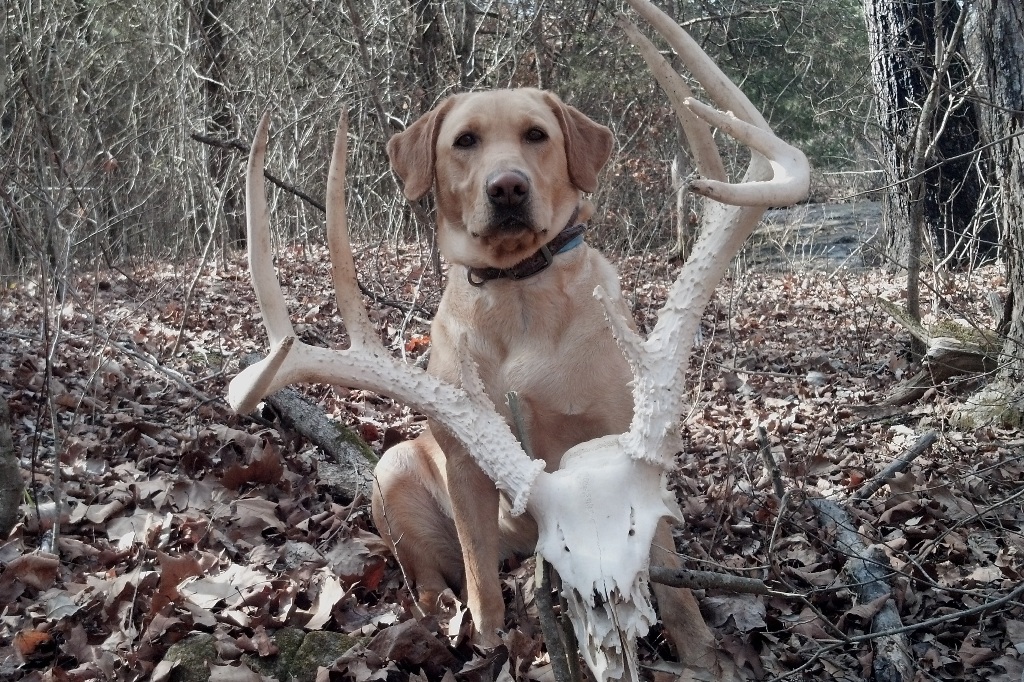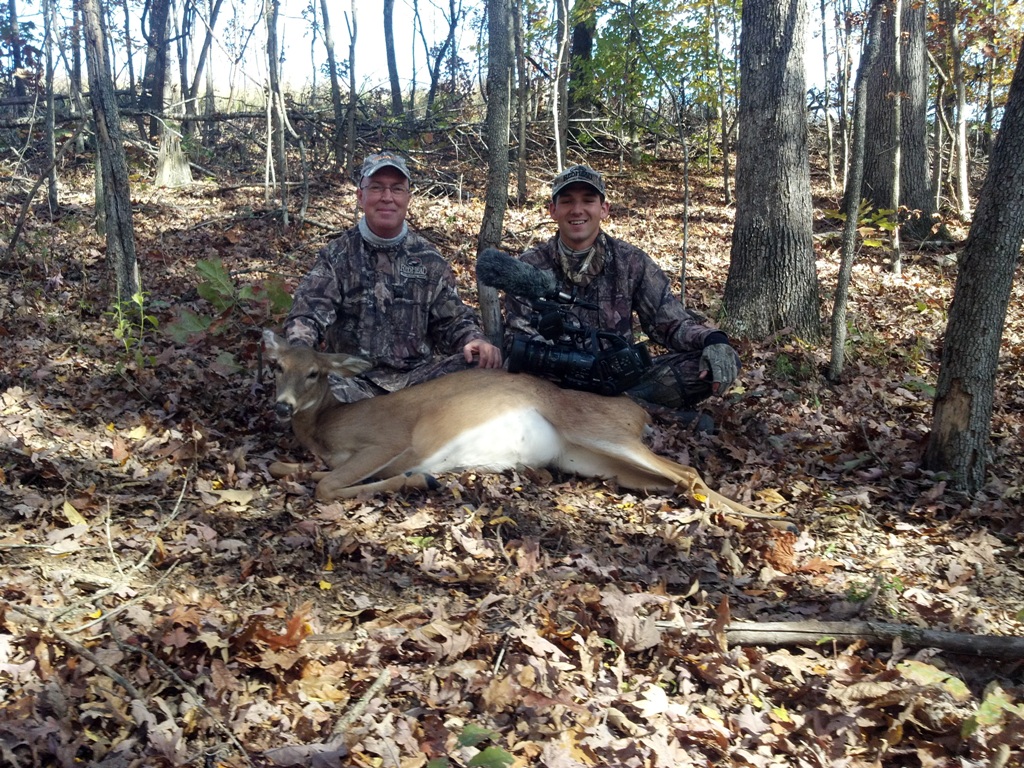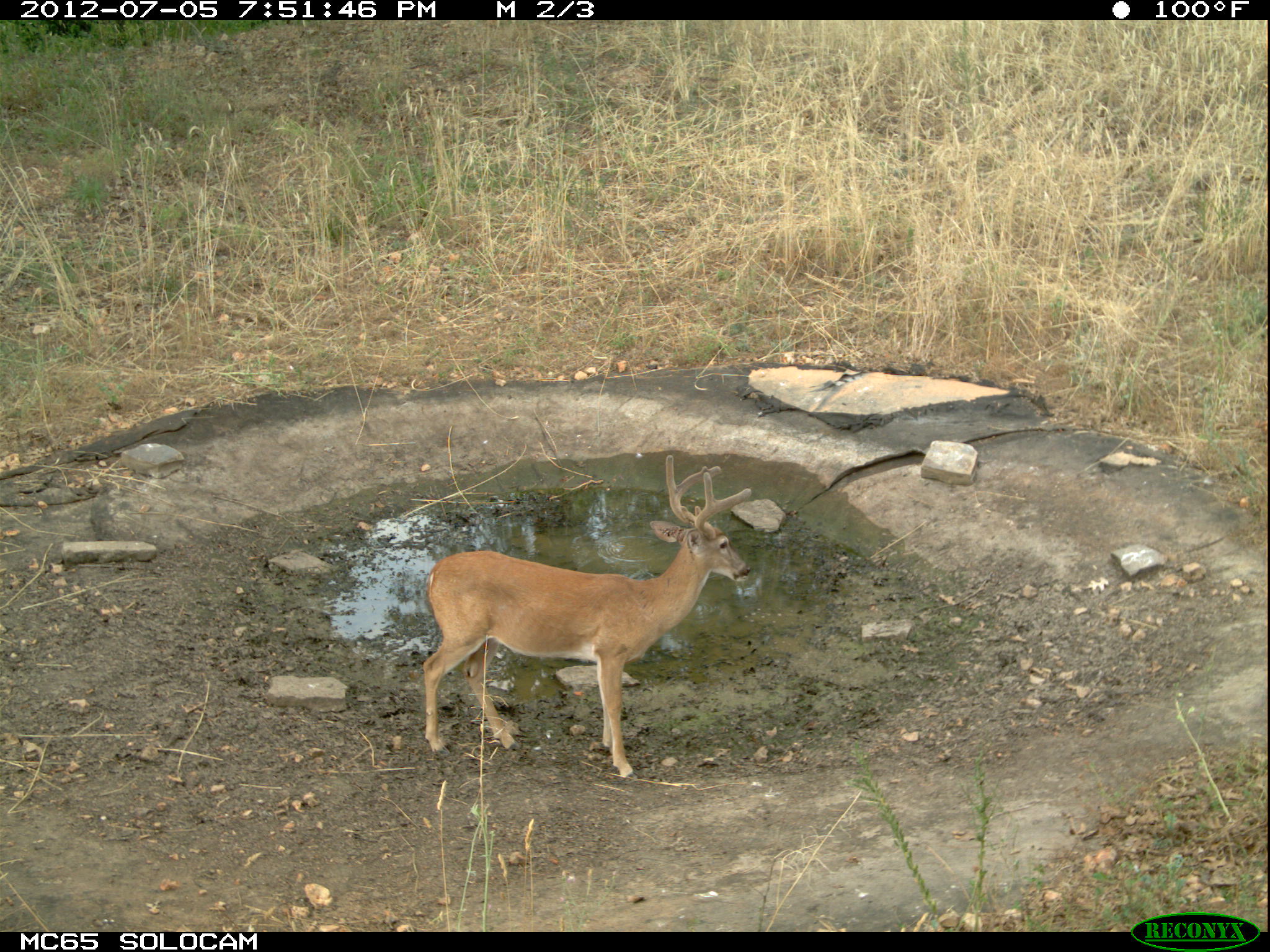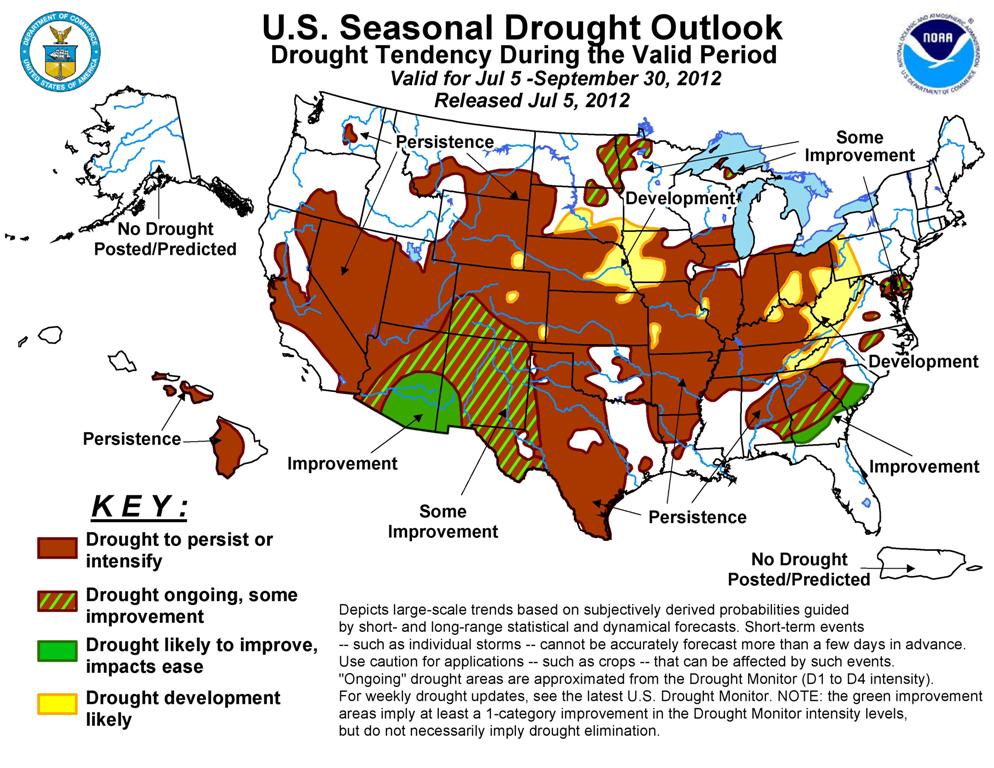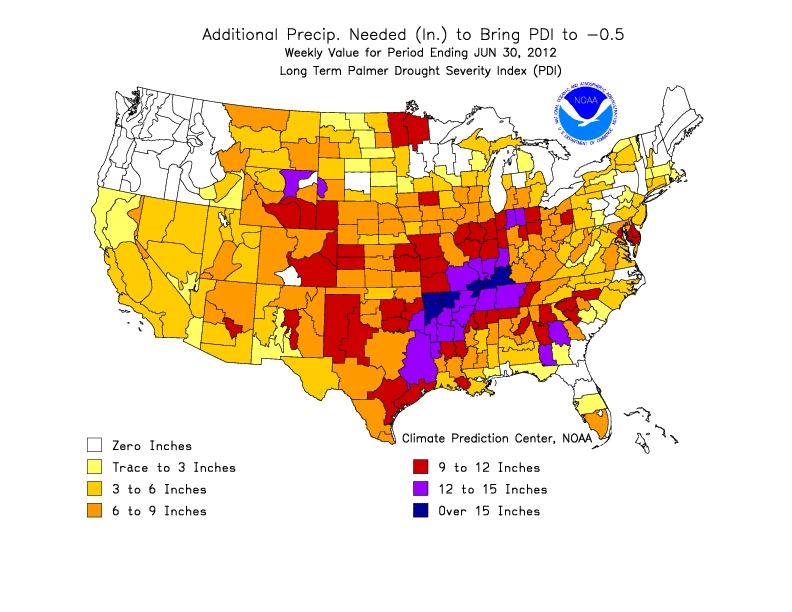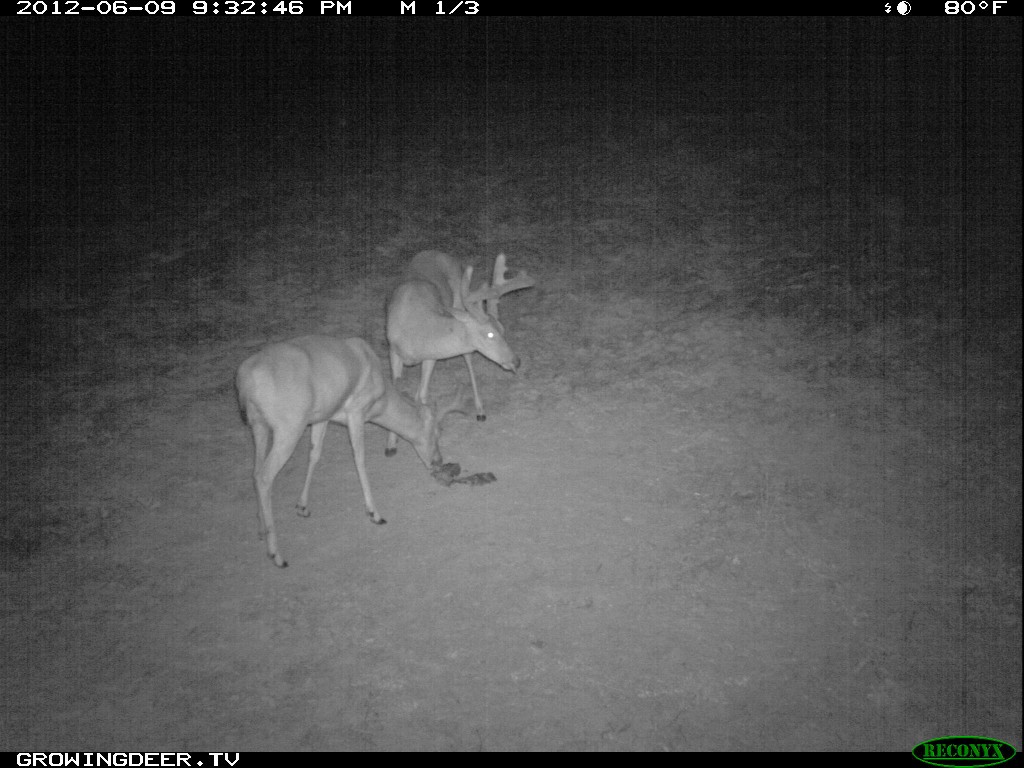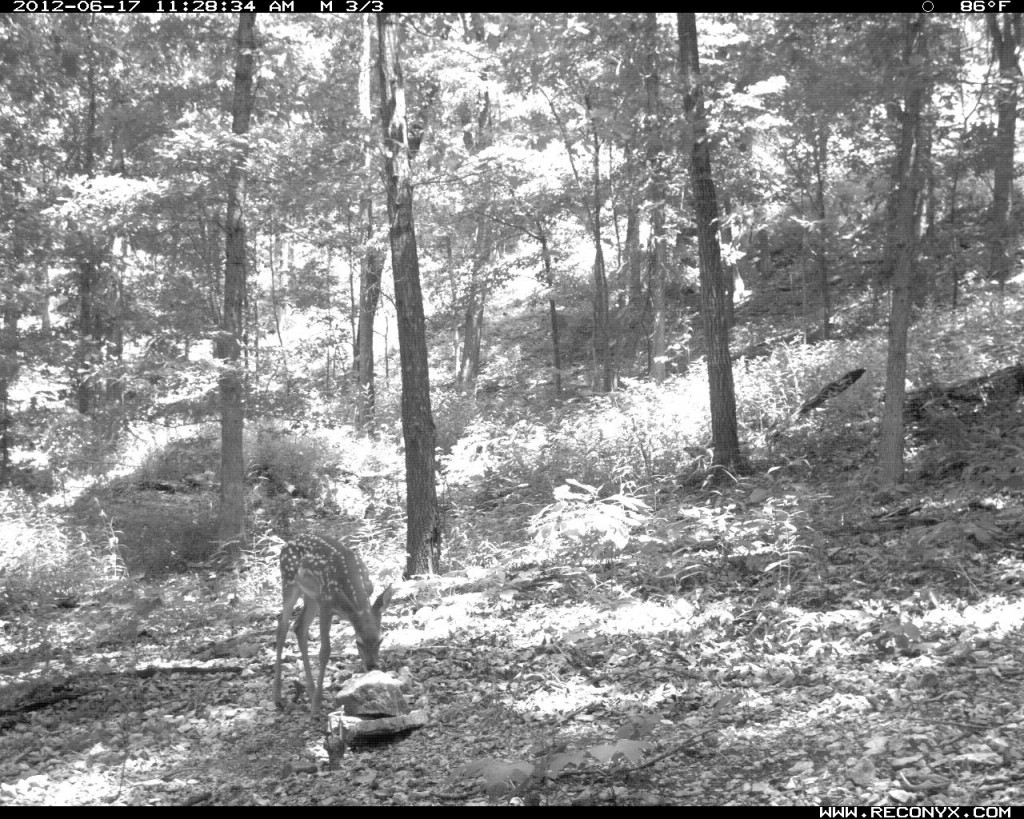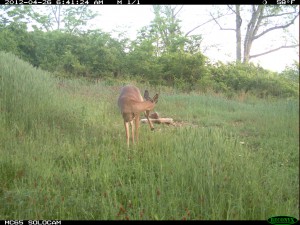Category: White-tailed Deer
Shed Hunting: Finding Antlers The Hard Way
In my last blog post I outlined my initial plan for shed hunting our property, The Proving Grounds. My initial focus was to resist the call of the easy food plots and the lure of the open hardwoods and search along all the creeks and water sources for deer that succumbed to EHD this past summer.
I have to tell you that looking for the skulls of deer is not as joyful as hunting for the thrown shed antlers. Seeing the antler sticking up is a real rush that quickly is tainted with sadness when you see that it is attached to the skull plate.
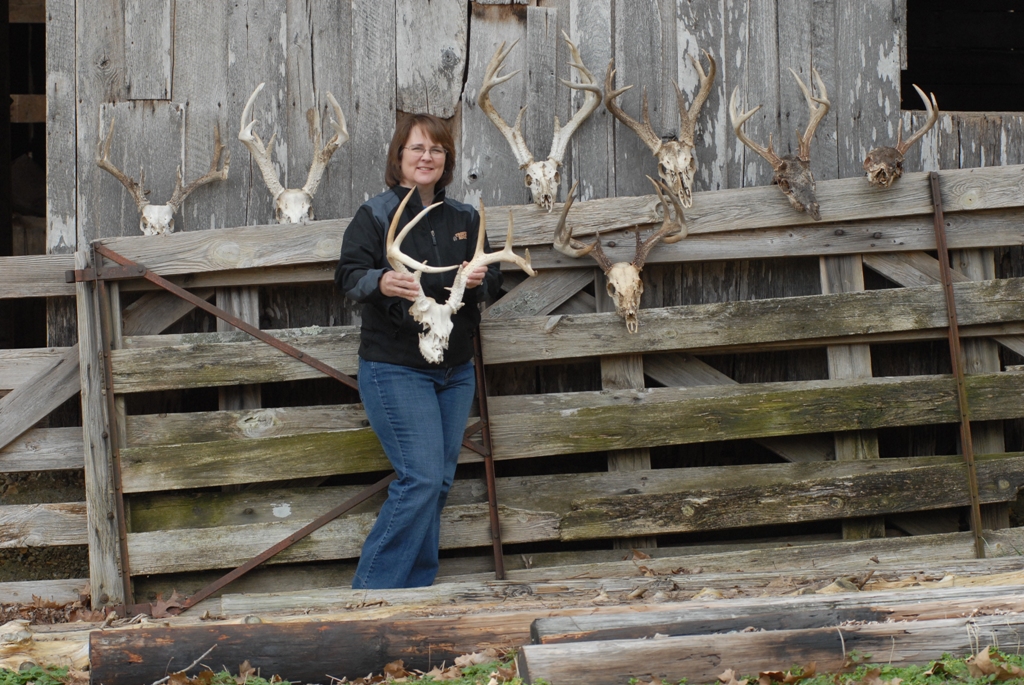
Over the last three weeks we have found seven bucks that died seeking water as EHD drove them to water sources.
The first buck Crystal (my shed hunting Labrador) and I found along the creek bank is one that we called Clover Mountain 10. Upon finding that buck I made my usual call to Grant to let him know I had found an intact set of horns. I felt like I was calling to tell him that one of our friends had died. As I waited for him to join me to evaluate the buck the usual joy from finding a big shed antler was missing.
Over the last three weeks we have found seven bucks that died seeking water as the disease drove them to water sources. These bucks included: Clover Mountain 10, Bean Flipper, 8 Ball, and Last Lick Lefty. In addition to these bucks AJ, our current wildlife student, found a fifth buck – Cave Stickers. Each buck had been appearing on the Reconyx trail cameras over the summer with Adam noting the last known sighting of the bucks. He had hopes that they had simply been avoiding the cameras by spending more time in a different part of their range. With each buck those hopes were dashed along with the anticipation of having one less mature buck to hunt this fall.
Finding the remains of the deer that passed this summer due to EHD is not an easy task (Watch GDTV 142 for more info) They’ve been lying around the creek bottoms long enough for scavengers to eat and spread the bones. Leaves have fallen and covered up the skeletal remains. The bucks get all the glory of being shared on facebook posts and here on the blog while the various scattered bones go undocumented. We have had very little heavy rain to clear the leaves until just this last week. That rain helped to uncover the remains of two of the bucks we found as they were lodged in snags/log jams in the creek.
I have to give Crystal some credit for assisting with the finds. One of the keys to shed hunting with a dog is to know your dog and watch their body language. Although Crystal doesn’t like to retrieve a skull with antlers attached (I believe this is because in her early training I had her retrieve an intact skull/antlers and she hurt herself), she does go to them and stand over the remains which makes me follow to see what she has found.
In the next weeks, we’ll share more of our shed hunting adventures and explain why the antlers on the bucks that died in velvet look and feel different from cast antlers. In the meantime – share your shed hunting success stories and photos with us on our facebook page.
May God bless you with some special shed hunting!
Enjoying Deer together,
Tracy
The Deer Hunter’s Second Season: Shed Hunting
There are a few more days of archery season in Missouri and a few other states. Grant and the boys still have a few days to fill their tags here at The Proving Grounds. Once archery season ends, Grant will give me permission to start my season – shed hunting! Late winter is the time that I enjoy most here in Missouri. The woods are free of ticks and snakes. The brush has died back so that the hills and glades are easier walking. Best of all – Crystal and I can find special treasures while walking these Ozark Mountains – shed antlers! (Crystal is a Labrador Retriever that I have trained to find and retrieve shed antlers.)
Shed hunting in the Ozarks is not like shed hunting in the states that have flat land like Iowa, Kansas, or Illinois. I envy the folks that can go shed hunting and spot one 300 yards away! Finding a shed in these hills is akin to an Easter egg hunt where the eggs are well hidden. When you find a shed you consider it a special blessing!
My first objective will be to initially walk the valleys in search of deer that may have died during the fall from EHD. Our valley contains a creek that although it isn’t a perennial, flowing source of water, it does have certain deeper holes that held water even through this last summer’s drought. Those are the targets for my initial hunts. Crystal and I will be looking, but not necessarily hoping, to find the bucks that were lost due to the disease. Our fear is that we will find many more like the one Grant recently found pictured below and the one shown in the GrowingDeer.tv video back in September (GDTV 147).
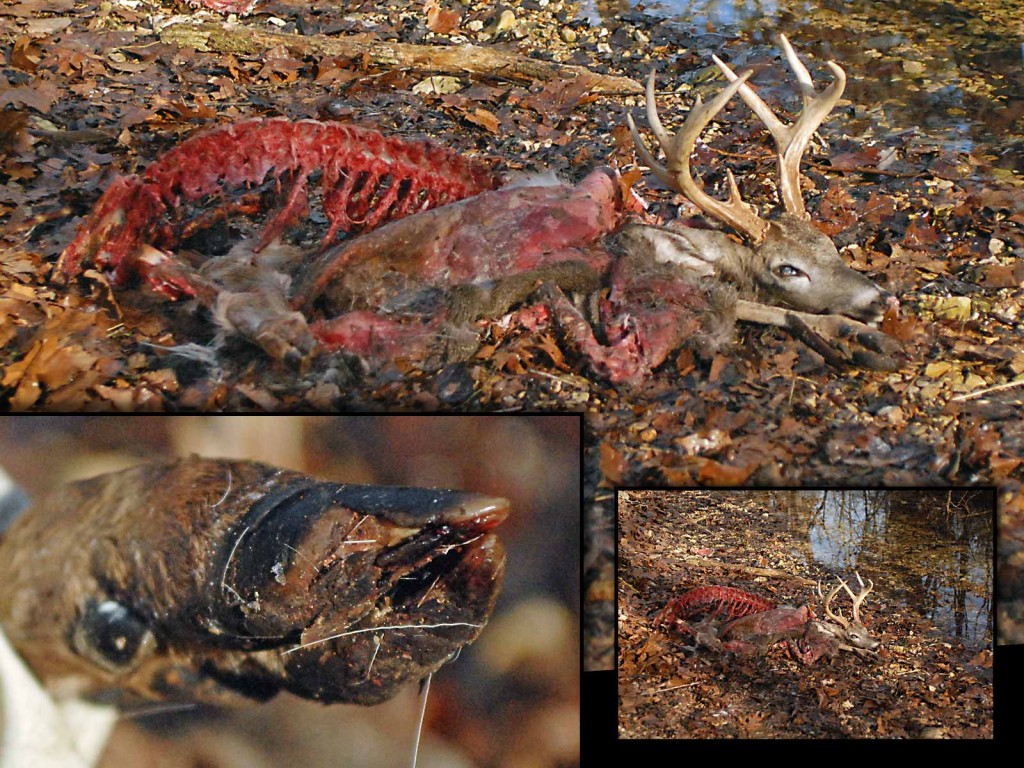
Initially I will walk the valleys in search of deer that may have died during the fall from EHD, like the buck pictured above.
On the brighter side, hunting in the valley has an additional benefit – it is relatively flat which will be the beginning of conditioning for both Crystal and me for the harder exercise of searching the hills!
Once the water sources have been hunted I will move on to the rest of the property. Grant and the boys will still be using the Reconyx cameras to monitor the deer herd to determine which bucks made it through the season. As soon as bucks start to show they are loosing antlers, I will develop specific areas to canvas based on the travel patterns shown by the Reconyx MapView software. Perhaps we’ll get lucky like we did last year (see it here in GDTV 116) and the Reconyx will capture images of one of our hit list bucks the night that he sheds his antlers!
Grant and I will be sharing some other tactics to help you find shed antlers in future blog posts. In the meantime – get out there to get some exercise and enjoy Creation! Enjoy the shed hunting season and share when and what you find on our Facebook page! I look forward to hearing about and seeing all the great treasures you find in the next few weeks.
Enjoying Deer together,
Tracy Woods
Why Bucks Are Shedding Antlers Early
Throughout the whitetails range I am receiving reports and photos of bucks that are already shedding their antlers. Since early December 2012 I’ve gotten several Reconyx trail camera pictures of bucks that have already shed one or both antlers here at The Proving Grounds. It’s common for an occasional buck to shed early due to injury. However, I suspect about 10%+ of the bucks at my place have already shed.
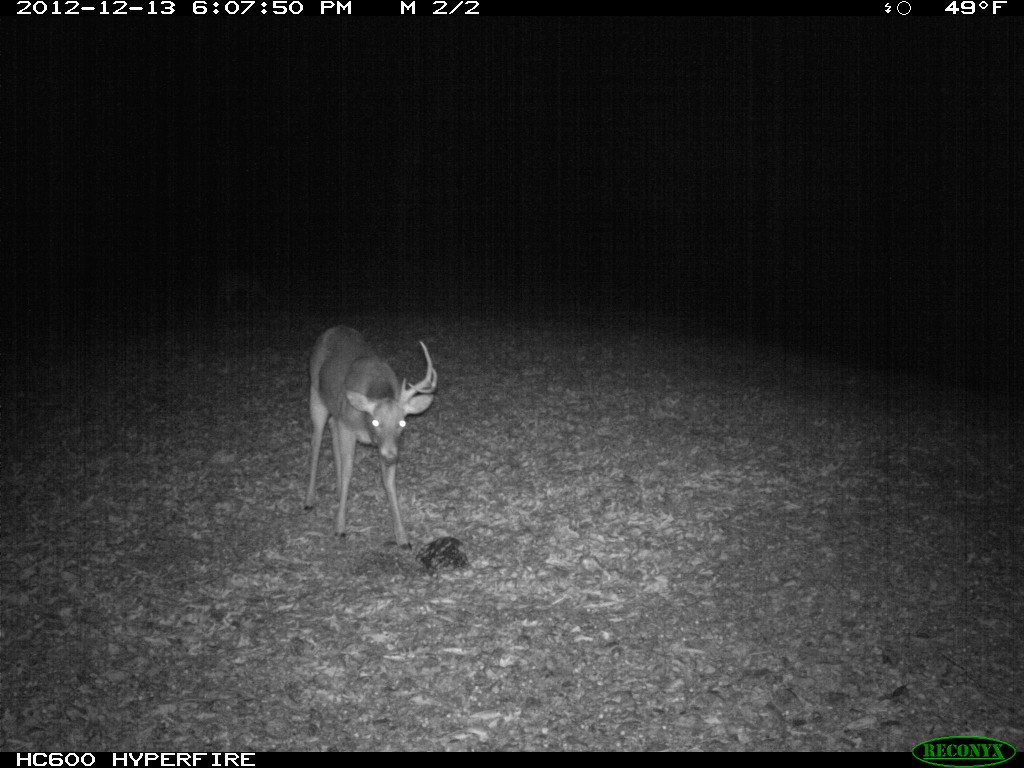
Since early December 2012 I’ve gotten several Reconyx pictures of bucks that have already shed one or both antlers.
Early shedding is a sign of stress. I’m sure deer at my place are stressed. During the 2011 growing season we experienced an extended drought followed by a record drought (the driest July during 118 years of record keeping) during 2012. Plants can’t transfer nutrients without water. Therefore forage quality was most likely severely decreased during the past two years.
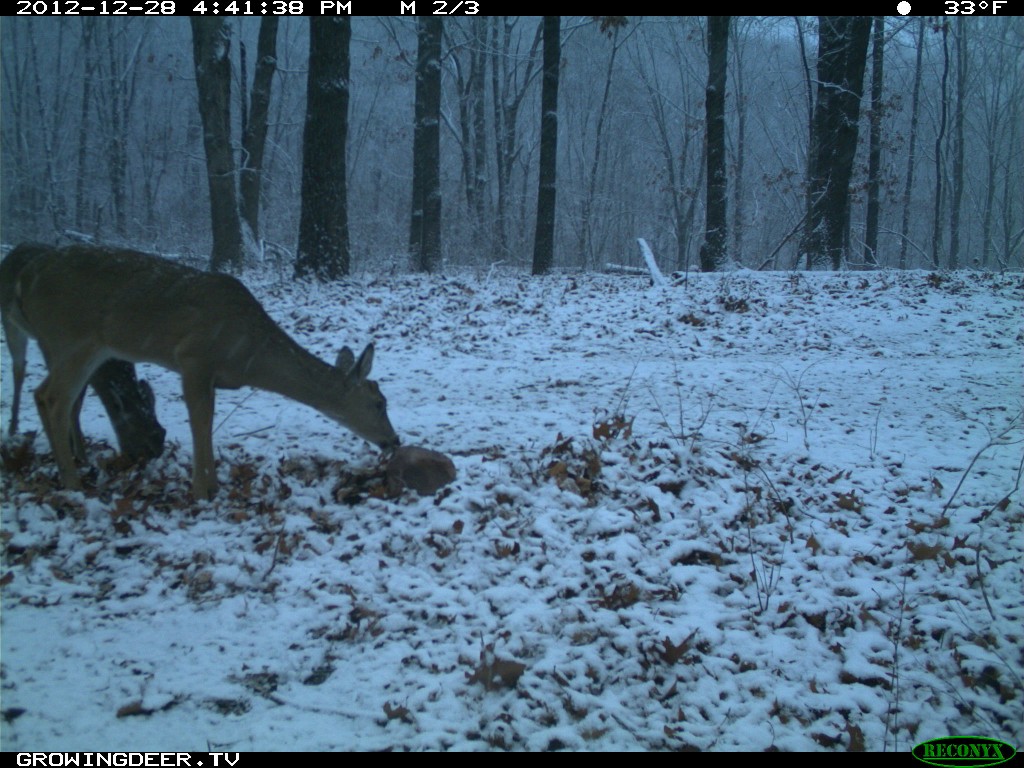
During the past two years the deer at my place experienced extended drought and a major outbreak of EHD.
There was also a major outbreak of EHD at my place (as in many places from Florida to Wyoming) last fall. There are two forms of EHD, acute and chronic. Deer with the acute form of EHD usually die within 24 to 36 hours. Deer with the chronic form may or may not die. If they do die, it often takes months.
We’ve found bucks that probably died from both forms of EHD (GDTV 147). The good news is that Mrs. Tracy will likely find a lot of sheds this year! The bad news is that she will also find a lot of skulls of bucks that died before they shed their antlers. I’ll keep you posted as Tracy and Crystal begin shed hunting. They will start just as soon as the archery season closes in Missouri (January 15, 2012).
I’ll begin a supplemental feeding program using the high quality feeds from Record Rack. I’ve never used supplemental feed before at The Proving Grounds. However, given the drought and amount of stress the herd is experiencing at my place, I think supplemental feeding is a very smart management strategy. I’ll keep you posted on our feeding program through this blog, on my Facebook page, and on GrowingDeer.tv!
If you’ve never used supplemental feed before, stay tuned and I’ll show you how and why I opted to use this strategy from a biologist’s point of view.
Growing Deer together,
Grant Woods, Ph.D.
Wildlife Biologist
EHD Still Killing Bucks
I was checking traps this week and noticed a bunch of vultures coming from the ground. That’s never a good sign. As I peeped over the creek bank, I saw a very good two year old buck – dead and already consumed by scavengers/predators.
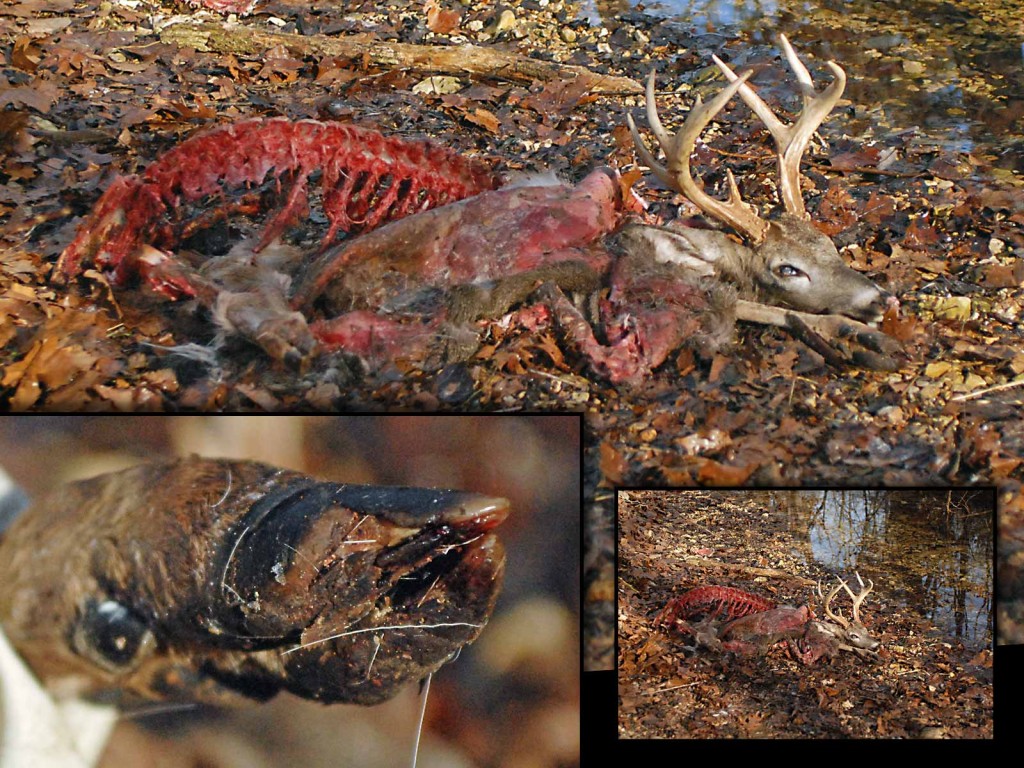
This two year old buck, found dead at The Proving Grounds, probably had the chronic form of EHD
A quick check confirmed my suspicions that the buck’s hooves were cracked and sloughed. This buck apparently had the chronic form of EHD (Epizootic Hemorrhagic Disease). If you are not familiar with EHD, check out this quick fact sheet.
The day I found this buck, Adam and Brian filmed a doe that was harvested by one of our friends at the Redneck Blinds Proving Grounds. She also had sloughed hooves – a survivor (so far) of the chronic form of EHD.
I’ve also had many friends calling from throughout the Midwest that have either found fresh dead deer or had trail camera images of bucks that have already shed their antlers.
Amazingly I read a report last week that EHD was over. That’s incorrect. Anything that stresses deer tends to have a long term impact. In addition, the chronic form of EHD is known to impact deer for months after a frost kills the biting flies that transmit the virus.
The death toll from this year’s outbreak of EHD isn’t over. Deer with the sloughed hooves will have a very hard time escaping predators this winter. As the cold weather makes predators (primarily coyotes) burn more calories and as the population of rodents and rabbits decreases, deer become more and more of a primary food base for coyotes. Deer, even mature bucks, with sloughed hooves due to EHD, have very little chance of surviving this time of year.
The increasing predator population, compared to years ago when fur prices were high enough to encourage trapping, will result in a higher late season death toll from EHD than I was taught in school. The only way to help these bucks is to remove as much stress as possible by making sure quality food is available and reducing the population of predators! That’s my plan.
Growing Deer together,
Grant
Why Bucks Shed Antlers Early
The rut is tough. It’s probably like playing professional football without pads! Certainly some players would get hurt. The same is true with deer. Some bucks get hurt (gored, kicked, etc.) during the rut.
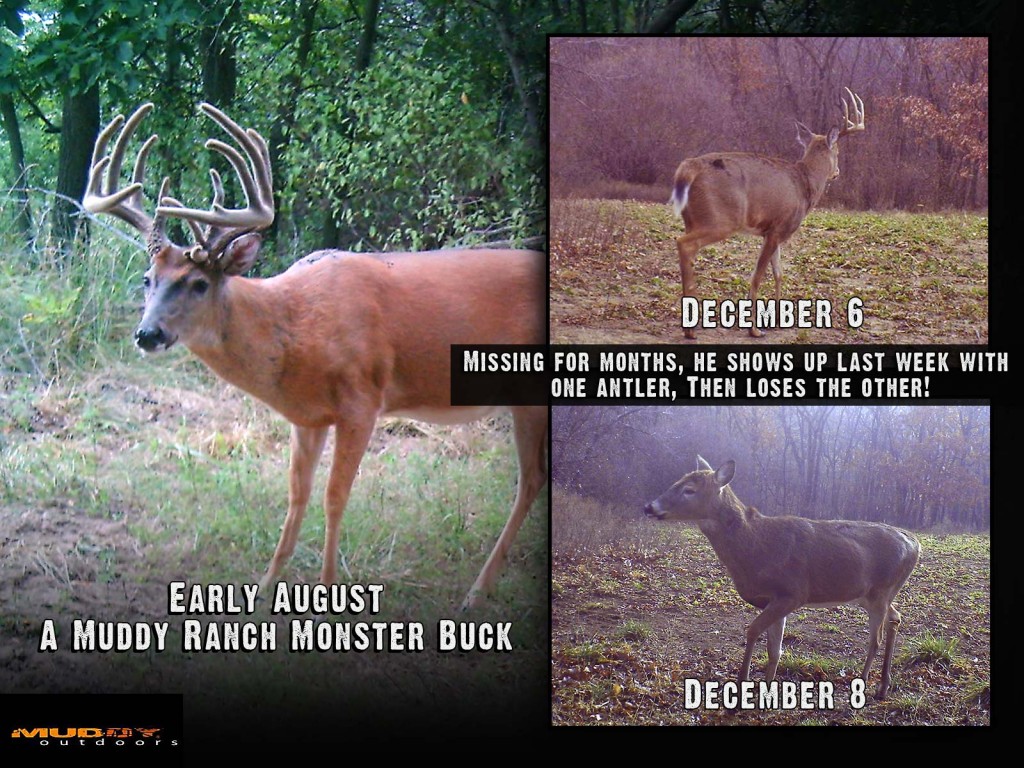
Muddy Ranch buck sheds early
Bucks shed their antlers when certain hormones, primarily testosterone, drop below minimum levels. A buck’s testosterone level can drop earlier than normal if he is injured or sick. A few bucks are injured every year during the rut so it’s common to hear of a buck or two that someone saw or got a trail camera pic of during early December that has already shed.
This year may be a bit different. The largest outbreak of hemorrhagic disease that’s been recorded in 55 years occurred. Record droughts occurred throughout much of the whitetail’s range resulting in decreased forage quality and production. In short, many deer herds experienced a LOT of stress during 2012.
I knew all of this, but wasn’t prepared for all the reports, trail camera pics, etc., I’ve already received from folks about bucks that have already shed! The subjects of my recent blogs were about why I like and the techniques I use to tag bucks during the late season!
I’ll still hunt until the end of season (January 15th at my place in Missouri). However, the number of hit list bucks that hold their antlers till then will be slim. The good news is that I can begin shed hunting January 16th!
Growing Deer together,
Grant
Deer Activity – Moon, Rut, or Weather?
I just shot a doe three hours before writing this. I saw her and a yearling buck. They were feeding on acorns. It’s October 25th and I’ve been hunting with three other guys for three days. None of us have seen a mature buck. I think it’s easy to explain why. The temperature each day has peaked at 80+ degrees.
I’m sure there will be some that will say deer are breeding late due to the drought, etc. However, that’s not the case. Years ago several researchers and I compared 1,000’s of conception dates collected from does harvested during the late season. The data was collected over several years and represented several states.
The strongest factor that predicted when the rut occurred was when it took place the previous year – not the phase, declination, etc., of the moon or any weather pattern. Timing of deer breeding is based primarily on genetics – not day to day factors.
Timing of breeding and daytime deer activity are not necessarily related. Several of my buddies have arrowed some whopper bucks during the past week in the western states – where the temperatures have dropped below normal. I was hunting at The Kentucky Proving Grounds early this week where the temperatures have been above normal. Even though the deer herd at The Kentucky Proving Grounds is a well managed deer herd, even healthy deer remain inactive during days with high temperatures.
From 20+ years of keeping records, there’s a strong trend that once deer start putting on fat along with their winter coat they simply don’t like moving during daylight, especially when the temperatures are above normal during daylight hours – no matter the date on the calendar.
I hunt when I can, but I expect more success when the daytime temperature is 10-20% below normal. I watch the weather forecast much more than moon phases or the state of the rut. The daytime temperatures are predicted to drop 30 degrees the next couple of days. I’ll let you know next week if the big bucks begin moving during daylight after the temperatures drop!
Growing (and hunting) Deer together,
Grant
Antlers Stop Growing
Deer season opens in the coastal counties of South Carolina August 15, 2012. Other states, such as Kentucky, open their seasons while many bucks are still in velvet. This leads to many questions including, “About how long before a buck sheds his velvet are his antlers finished growing?”
Generally speaking, bucks stop adding inches to their antlers about three weeks more or less prior to shedding their velvet. However, just as important is the rate of antler growth while bucks are in velvet. In general (depending on location and quality of food available) new antler growth begins as soon as the previous set is shed. They continue to grow through early to mid August. At this time the antlers are still covered with velvet, but begin mineralizing (hardening) and not adding additional size.
This means we can observe or get images of bucks during mid August and know about how large of antlers a buck will produce. I typically estimate their score and then reduce my estimate by 20% to compensate for the removal of velvet.
This year some bucks won’t add many inches during August due to the drought. Protein is a big component of antlers. Plants experiencing severe drought stress have very low protein levels. Deer are not able to store protein like they do energy (in the form of fat) or some minerals (in their skeletal system). Hence, if protein is in short supply it has a direct impact on antler growth.
Unless deer have access to supplemental feed, protein is in short supply throughout the area impacted by the current drought. Average antler size will likely be smaller this year compared to most years in the drought-impacted areas. These cycles come and go. It’s the overall health of the deer herd that concerns me the most as a biologist and as a hunter.
During normal years, hunters have a very good idea what the total antler size will be by mid August or so. This year, at least in areas experiencing extreme drought, hunters may know the antler size of bucks much earlier.
Growing (and watching) Deer together,
Grant
EHD and Drought
N.C.D.C. (National Climatic Data Center) released their drought outlook yesterday. It was literally and mentally not a pretty picture. Most of the whitetail’s range is predicted to experience a significant drought through September. This means antler and fawn development will probably not be as good as it could be in most areas. There will be exceptions with areas that irrigate or receive a timely rain. But most deer herds will suffer.
There are other impacts of drought stress on whitetails than the obvious reduction in forage, and therefore, herd quality. One of the worries I have when droughts occur is E.H.D. (epizootic hemorrhagic disease) and B.T. (bluetongue). These are both viruses but are genetically different. However, the signs and/or symptoms of both viruses can appear similar. In fact it requires samples and testing to confirm which virus is present in sick or dead deer. For more detailed information about EHD/BT, check out this fact sheet.
Unlike CWD, EHD/BT is not spread from deer to deer through direct contact. Rather it is transmitted from deer to deer by biting midges (called sand flies, gnats, no see ums, etc.). Research indicates that the scale of EDH/BT outbreaks is more closely related to the population levels of midges than deer. In other words, reducing the deer population probably won’t decrease the level of an EHD/BT outbreak.
Populations of the biting midges, and therefore EHD/BT outbreaks seem to explode when a drought has occurred resulting in lots of mud or moist soil being exposed. If rain occurs following such a drought, there is usually a huge hatch of the midges. Should widespread rain occur during sometime from July until it frosts, conditions could be perfect for a very large EHD/BT outbreak. Usually less than 25% of a deer herd dies during an EHD/BT outbreak, but there have certainly been cases where more than 50% of the herd dies.
There is no known vaccine, etc., to use for EHD/BT. Fortunately, EHD/BT is not infectious for humans.
I really want it to rain throughout the drought stricken area! However, I really don’t want it to remain dry until August and then rain. That could be a perfect recipe for a massive EHD/BT outbreak.
If you begin seeing deer that appear sick or finding sick and/or dead deer by water call your local wildlife biologist and/or game warden. They won’t be able to help the deer, but it will be very important to monitor the scale of the outbreak.
To end on a positive note, when a resource (food, cover, and water) is limited, it’s much easier to pattern deer. If conditions don’t change drastically before hunting season throughout most of the whitetail’s range, it may be one of the best hunting seasons for seeing deer that has occurred in a long time! I’m not hanging all my Muddy stands yet. I’m saving a few to place on whichever water source is available should the drought not end before hunting season begins.
Growing Deer together,
Grant
Antlers and Trace Minerals
By mid June most bucks’ antlers are developed enough to get an estimate of their configuration and potential size for the season. I always have my Reconyx cameras pointed at Trophy Rocks this time of year. Some recent posts on my Facebook page indicates that there is some confusion of why I strongly prefer Trophy Rock as a source of trace minerals compared to cattle blocks, homebrews, etc.
So, for the record, Trophy Rock is all natural. It’s mined in Utah and shipped – there are no artificial additives, etc. It’s mined from an ancient sea bed that was capped over (probably by volcanic action). This allowed the sea minerals to remain and harden throughout the deposit (not settle out and leave pure salt).
There are more than 60 different trace minerals in Trophy Rock. The amount of any of them, except salt, is low. That’s appropriate for trace minerals. Deer only need a very small amount of trace minerals daily. Let’s define “trace.” Most researchers refer to trace minerals in parts per million (ppm) of the diet. For a point of reference, one (1) ppm is about one inch in 17 miles!
It doesn’t take much of a trace mineral to benefit a deer. But without access to trace minerals in their diet, bucks won’t be able to express their full antler growth and does won’t express their fawn producing potential.
Researchers don’t know all the trace minerals or the quantity of each that deer require. It’s likely some of the trace minerals deer require to express their potential are available in the soil and/or plant. The availability of trace mineral varies significantly from area to area and even field to field in some cases!
This is why the vast majority of cattle mineral blocks only include six minerals and most products made for deer include a maximum of 20 trace minerals. If there are appropriately fertilized crops or food plots in the area, deer most likely have access to all the macro (“needed in larger quantities” minerals like calcium and phosphorous) minerals. However, no matter how much of the macro minerals are available deer will produce smaller antlers and fewer fawns if they don’t receive the necessary trace minerals.
There is a horrible drought occurring in most of the Midwest as I write this. However, I was thrilled at the antler growth patterns and fawn production shown by my Reconyx cameras this week. I feel strongly that having Trophy Rocks out at my place has helped the herd.
I notice deer tend to use Trophy Rocks more during periods of drought. This is probably due to the fact that they are consuming a lower quality of forage (not getting as many minerals from the plants compared to during a normal growing season) and consuming more free water (standing water compared to getting water from plants).
Certainly all deer, from mature bucks to young fawns, are currently using Trophy Rocks at my property. Fellow hunters and landowners that I’ve shared trail camera pictures with have all agreed that the bucks at my place are showing bigger antlers per age class compared to where they hunt.
Growing Deer together,
Grant
Ticks: On You and Your Deer
Summer 2012 may well be recorded as the summer of ticks! I use my Reconyx cameras year round to monitor and study deer at my place and on client properties. At my place near Branson, Missouri and a client’s property near Cadiz, Kentucky I’ve never noticed as many ticks on deer at this time of year during my 20+ year career of using trail cameras. The tick loads I’m seeing now are typically not seen until late summer.
The CDC (Centers for Disease Control) says, “Lyme disease is the most commonly reported vectorborne illness in the U.S. In 2009, it was the 5th most common Nationally Notifiable disease.”
Both Rocky Mountain Spotted Fever and Lyme’s are serious diseases. Those of us that are frequently in the outdoors need to be diligent about searching for and removing ticks after being in the field. The CDC Lyme Disease page has some useful information about how to prevent being bitten by ticks, how to remove ticks, and diagnosis of potential tick-borne diseases.
My family, staff, and, I are exposed to ticks almost daily. We’ve found that treating our clothes with Permanome and allowing it to dry on the clothes a few days before wearing works well. One treatment will last through the clothes being laundered several times. This spring while turkey hunting, Adam had treated his clothes and his brother didn’t. Adam said he literally watched ticks crawling on his brother and there were none on him. His brother hadn’t treated his clothes. Permanome is good stuff when used appropriately.
However, deer can only attempt to groom themselves and other deer to remove ticks. This is not effective based on my Reconyx images. In an effort to reduce the chances of my family and guests suffering from a tick-borne disease, and to improve the fawn survival and overall health of the deer herd at my place, I’m researching the cost and effectiveness of different tick control methods. If you follow GrowingDeer.tv at all, you know I use prescribed fire frequently. That’s clearly not controlling the tick population at my place. If you would like to reduce the number of ticks where you hunt, stay tuned.
Of all the predator control work I do, none may be more important than attempting to reduce the number of ticks to benefit the deer, turkey, and other game species using my place. From the comments on my Facebook page, ticks are a noticeable problem throughout much of the whitetails range this year. In many areas I’m sure there are more pounds of ticks per acre than there are predators – literally. I’ll keep you posted as to what I learn.
Growing Deer together,
Grant



